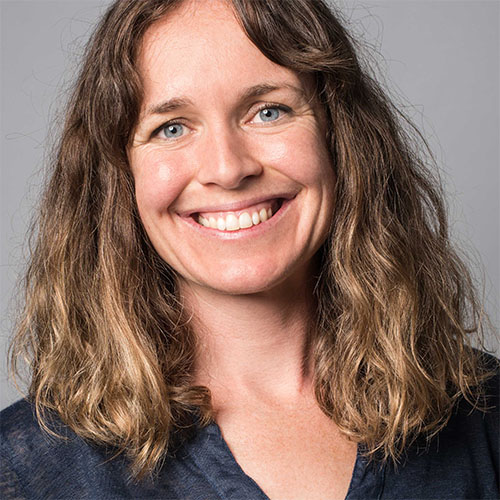
Keywords
Biography
Eva Lloyd is a lecturer in an 'Education-Focused' role within UNSW Built Environment, Interior Architecture program. She comes from a practice background, working as an architect and urban designer, in Cambodia and across South East Asia on community-based development projects. Projects involved collaboration with local and international NGO’s, grassroots organisations and private sector in work spanning from upgrades for tenure security...view more
Eva Lloyd is a lecturer in an 'Education-Focused' role within UNSW Built Environment, Interior Architecture program. She comes from a practice background, working as an architect and urban designer, in Cambodia and across South East Asia on community-based development projects. Projects involved collaboration with local and international NGO’s, grassroots organisations and private sector in work spanning from upgrades for tenure security with urban poor communities, to affordable housing, design advocacy, participative workshops and design education. Eva brings this experience into her educational role, now convening Design Studio courses that place emphasis on social agency and human-centred design within local and international contexts. She developed and leads an annual interdisciplinary urban design workshop connecting UNSW students with design students from the Royal University of Fine Arts, in Cambodia, to analyse and compare the use of public street space in Sydney and Phnom Penh. From this she has worked with a team of Interior Architecture staff members and students to launch a Professional Placement program and travel award, hosted by a local Cambodian arts NGO, and run as a collaborative experience for a student from UNSW in Sydney and from RUFA in Phnom Penh.
My Grants
2018 BE Teaching and Learning Grant: Hackathons as a pedagogical model for interdisciplinary design education
My Qualifications
2009 Architecture Registration, Royal Australian Institute of Architects, New South Wales, Australia
2006 MA Architecture, 1st class hons. University of New South Wales, Australia
2003 BA Interior Architecture, 1st class hons. University of New South Wales, Australia
My Research Activities
Eva's research interests draw from her experience in socially focused design practice and education across South-East Asia.
1 Multi-stakeholder design frameworks for inclusive city-making.
2 The expression of the 'urban-interior' in global contexts and it's contribution to street vitality.
3 The role of design practitioners in accommodating or blocking the ability for end users to appropriate space.
4 The use of 'direct' behavioural observation methods to analyse spatial environments.
5 The use of on-field analogue drawing as a research methodology for design education.
6 The value of 'real-world' global experiences in design education, both in terms of context and cross-cultural student collaboration.
My Engagement
- Development of BIA International Professional Placement Travel Grant 2018, hosted by Sa Sa Art Projects, Cambodia.
(collaboration with Lisa Zamberlan, Tracy Huang, Iva Duracovik, Tom Richards)
- Development of partnership between Yuwaya Ngarra-li and UNSW Built Environment, to collaborate on Indigenous community projects in Walgett, NSW, 2018. Projects currently in development. (collaboration with Sara Padgett Kjaersgaard)
- Mentoring within MCIC Hackathons, 2018: 'Health and Houses Hack - How can Dhaka's Slums be Improved?' and 'Indisprint- Wearable technology for Diabetes Management'
- URAP (Urban Resilience in the Asia Pacific) Conference presentation, 2018 - 'Urban resilience through people-centred design' (in collaboration with Richard Briggs)
- Accepted participant in Academic Women in Leadership program, 2019
My Teaching
Course Convener
Design Practice 2: Articulate
re-imagining of domesticity and public/private boundaries through micro-living and the urban interior.
Design Practice 8: Resolve
the agency of the interior within the context of the urban morphologies and civic typologies of the twenty-first century city
Street Life Studies: Cambodia
comparative observation and analysis of the behavioural, systematic and physical components of public street space with a view to understanding what might make vital city streets